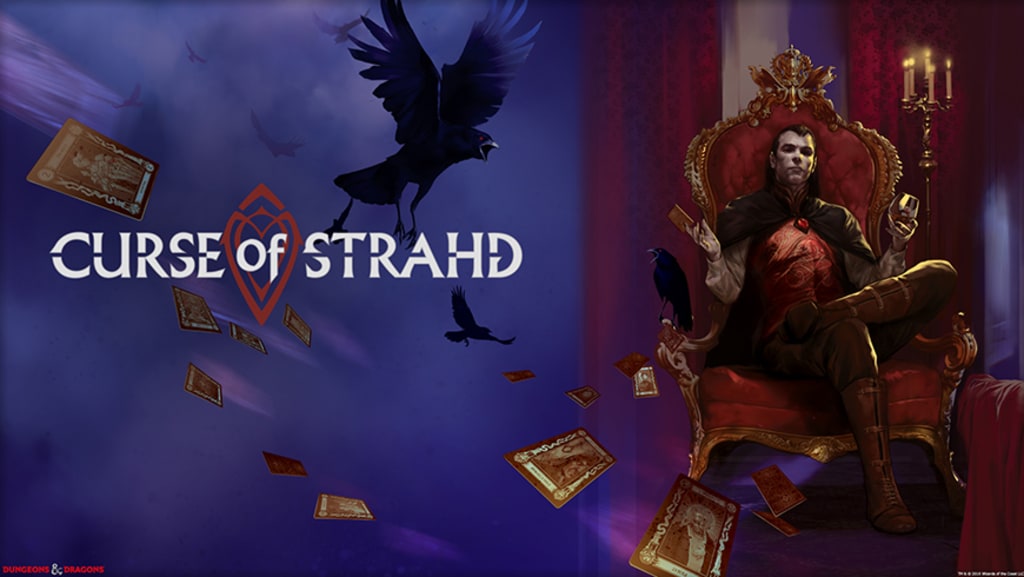
One of the more powerful types of enemies players will encounter in a Dungeons and Dragons campaign are vampires.
Whether they are the final boss of an adventure, or a random enemy who the party comes across, vampires in Dungeons and Dragons have numerous abilities that make them dangerous to any group. Yet every once in a while, a player will wants to create a vampire character. Sometimes this happens because a player’s character was turned into a vampire. Others merely want to have a character with the additional powers and traits that come with playing a vampire.
Having a vampire in the group can be challenging for dungeon masters and in some cases the group. Yet a vampire character can also result in some interesting roleplaying mechanics and decisions on behalf of the player.
Bringing a vampire character into a Dungeons and Dragons campaign can be tricky, but it can be done.
One of the first questions that should be asked is why does a player want their character to be a vampire?
Part of the player’s desire to become a vampire may stem from watching a movie or reading a horror novel. Another reason could be they met someone dressed as a vampire and thought it would be a great look for their character.
From a mechanical standpoint, playing a vampire in Dungeons and Dragons is appealing because the creatures gain numerous traits and abilities.
There are various resources and builds for vampire player characters. One of the more balanced templates is the homebrew vampire build on DND Beyond, which includes stat increases and the Undead trait.
If a player seeks more abilities for their vampire characters, they may want to look at a build on Roll20, which features a plethora of bonus abilities for vampires including Legendary Resistance, Misty Escape and Charm.
If a DM allows the player to create a vampire character, especially one with numerous bonuses, they should encourage them to create an interesting backstory as to why the hero is now a vampire. The explanation can be as simple as the players' character was bit by a vampire. However, that scenario would apply to a vampire spawn, which is different than playing an actual vampire.
A player who truly wants to be a true vampire should work for it since their character is going to potentially be stronger than the rest of the group.
While the dungeon master has the final decision as to whether or not to include a vampire character into the game, the other players should have the opportunity to provide input on the situation.
As I noted, a vampire has the capability to be more powerful than the rest of the group. Some players might welcome the idea of having a powerful character in the group if they are able to defeat encounters and progress through the game at a faster rate. However, there are players who enjoy being the hero who leaps into combat, and they may become frustrated at another character being the group's powerhouse.
The other players may feel compelled to attack the vampire because of their class and origins. Characters like paladins and clerics whose abilities include destroying undead will not hesitate to destroy a vampire on site.
A group whose alignment is good would also not hesitate to kill vampires, which are lawful evil by nature. The group could collaborate to create a reason why their vampire has a neutral or good alignment.
If the group is going to attempt to destroy the vampire character, they should consult with the DM, as well as the player who created the vampire to work out potential scenarios and reasons why their characters would want to kill another party member. The vampire is still a member of the group and someone's character and the decision to kill them should be organic and come in-character explanations, rather than out of spite of the players.
Laying Out Boundaries for a Vampire Character
Having a vampire in the a D&D party provides the dungeon master several opportunities to develop adventure hooks and obstacles around it. This doesn’t mean the dungeon master has to create a group of enemies for the group to confront, such as a group of monster hunters who just happen to be in the same city as the party. However, the DM shouldn’t let the vampire tear through the adventure and enemies without consequences.
If the group and travels to a town and the vampire murders a prominent family, the DM could have residents confront them for their actions.
Dungeon Masters should make sure the vampire character adheres to the vampire’s weakness, as should the player who created it. If the group travels to an inn, the player or DM should note the vampire cannot enter the building unless it is invited. This character could result in some comedic moments from the player.
All in all, a vampire can make an interesting addition to a Dungeons and Dragons game, but the players and the dungeon master should make sure the inclusion of a vampire can benefit the entire group.
Links:
About the Creator
Al Stover
I am a reporter at a weekly newspaper in Ritzville Washington. When I'm not running around the office, I play video games, write fantasy fiction and listening to podcasts.






Comments
There are no comments for this story
Be the first to respond and start the conversation.